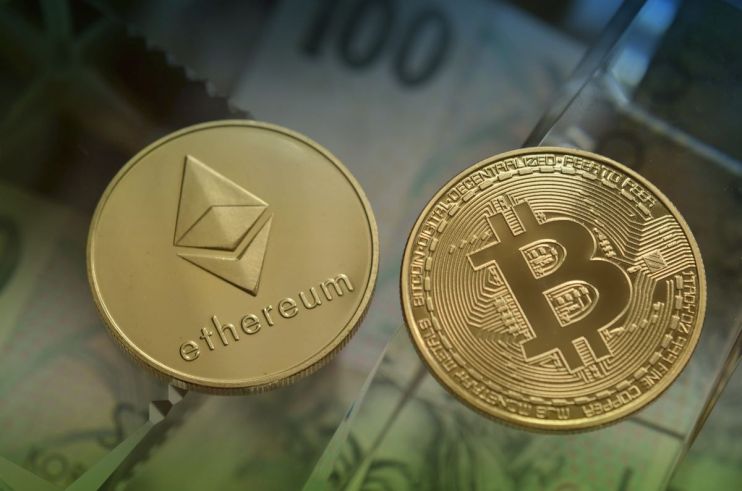Bitcoin NFTs push transaction fees upward, and Ethereum moves closer to staked ETH withdrawals

Data from CryptoCompare shows that the price of Bitcoin moved mostly sideways throughout the week, starting off at $23,000 and dipping to a $22,500 low before moving strongly upward to $24,000. The cryptocurrency’s price has since started dropping, to now trade at $22,700.
Ethereum’s Ether, the second-largest cryptocurrency by market cap, moved similarly to BTC, dropping to $1,550 at the beginning of the week to then surging to near $1,700. ETH outperformed the flagship cryptocurrency, however, and is currently changing hands for $1,625.
Over the past week, Ethereum’s developers further moved staked ETH withdrawals closer to reality through the launch of a new testnet called “Zhejiang,” which allows users to start testing Ethereum Improvement Proposal (EIP) 4895, enabling staked ether withdrawals. These will be included in the network’s next large upgrade, the Shanghai hard fork.
Testnets are duplicates of the main blockchain that allow developers to test upgrades and applications in a live environment without risking the main blockchain itself. The new testnet will provide the staked Ether withdrawals.
Before being able to withdraw staked Ether, testnet users will be able to deposit ETH to validators, so that it can be withdrawn. These are testnet tokens with no real value.
Meanwhile, on the Bitcoin blockchain, transaction fees have been rising as users on it have been minting thousands of non-fungible tokens (NFTs) after a protocol called Ordinals started allowing people to mint them directly on the BTC network.
Bitcoin’s transaction fees, as a percentage of total block rewards from the blockchain, increased to over 2.5% on January 31 and continue to rise, Bloomberg reports.
While Ordinals is designed so NFT creators enjoy a discount on fees, the size of data required for them is much larger than for normal transactions. Hundreds of NFTs have been minted on the Bitcoin blockchain since late January, and these include more data as they can be “anything from digital images to videos and even video game files”.
On the stablecoin front, there have been various depegs over time. These were recently examined by CryptoCompare, which revealed in its Stablecoins & CBDCs Report that concerns about Huobi’s solvency, partially owned by Justin Sun, coincided with stablecoin depegging in the Tron network. USDD, backed by TRX, BTC, USDT, and USDC, dropped to $0.973, while USDJ rose to $1.126 in January.
Gemini’s GUSD lost some of its value after the bankruptcy of Genesis caused a struggle to recover Gemini Earn users’ funds. NeutrinoUSD has been off its peg since September 2022.
Mentioning stablecoins, these are now set to be used by Maker’s Decentralized Autonomous Organization (DAO) in a $5 million legal fund that will “reimburse legal defense expenses incurred by active MakerDAO participants in case of legal or regulatory action”.
The coverage will initially be provided to “Recognized Delegates, Core Unit Facilitators, Core Unit permanent contributors, and active MKR holders”. The coverage will cover legal against beneficiaries if it’s directly related to their activities at MakerDAO.
State Street takes 9.32% stake in Silvergate
Over the week, it was revealed that fund management giant State Street has taken a 9.32% stake in the troubled cryptocurrency bank, Silvergate Capital, according to a filing with the US Securities and Exchange Commission (SEC).
State Street was reported to hold a 5.3% stake in the crypto bank earlier in the month, while the world’s largest asset manager, BlackRock, disclosed a boosted holding in Silvergate as of the end of 2022, taking its 6.3% stake in the crypto bank to 7.2%.
The new investment came in the same week in which the White House published a blog post titled “The Administration’s Roadmap to Mitigate Cryptocurrencies’ Risks” authored by four advisors. The blog lays out the “first-ever framework for developing digital assets in a safe, responsible way while addressing the risks they pose”.
The report came as the US Department of Justice (DOJ) has asked the judge in FTX co-founder Sam Bankman-Fried’s case to ban him from communicating with current or former employees due to allegations of witness tampering.
Twitter considering adding crypto payments
This week has also seen Twitter start seeking regulatory licenses in the US and developing software to introduce payments on the platform. Twitter CEO Elon Musk has said the system will be, first and foremost, a fiat currency system, but it will include crypto functionality.
Allowing payments through the microblogging platform is reportedly a critical part of Elon Musk’s plan to open up fresh revenue streams for it. The platform’s $5 billion-a-year advertising business has cratered since Musk acquired the platform.
Musk has said he wants Twitter to offer fintech services such as peer-to-peer transactions, savings accounts, and debit cards. The features are a part of his plan to launch an “everything app” that combines messaging, payments, and commerce.
Francisco Memoria is a content creator at CryptoCompare who’s in love with technology and focuses on helping people see the value digital currencies have. His work has been published in numerous reputable industry publications. Francisco holds various cryptocurrencies.
Featured image via Pixabay.